Estimated reading time: 16 minutes
Maintaining ideal water conditions in your aquarium can often feel like a tricky science experiment. One key element that requires careful control is the KH, or carbonate hardness, of your tank’s water.
Our guide will explore practical ways to lower KH levels and ensure your aquatic pets thrive in their environment. Discover the secrets to perfect water chemistry—let’s dive in!
Key Takeaways
- Test your aquarium’s KH level with a reliable kit to keep water safe for fish.
- Mix RO or distilled water with tap water to reduce KH without losing the necessary minerals.
- Use natural items like Indian almond leaves or peat moss to lower pH and KH in the tank.
- Keep some KH in your aquarium to prevent harmful pH changes and support aquatic life.
- Regularly change the water and consider using soda ash or crushed coral to raise low KH levels.
Understanding Water KH in Aquariums
KH, or carbonate hardness, measures the water’s ability to stabilize pH levels. This is crucial because stable pH ensures a safe home for your fish. Aquariums need the right KH level so that the water can fight against sudden acid changes.
Think of it as a shield; when KH is high enough, it protects your fish from harmful swings in their environment.
Many people get confused about what KH does. It counts all the carbonate and bicarbonate ions in your tank water. These particles stop pH from moving up and down quickly. A lot of different things can change how hard or soft your aquarium water is.
Fish waste, tap water, and even carbon dioxide from breathing can lower or increase KH levels. So you must check the KH often with an aquarium test kit to keep things balanced for your pets’ health.
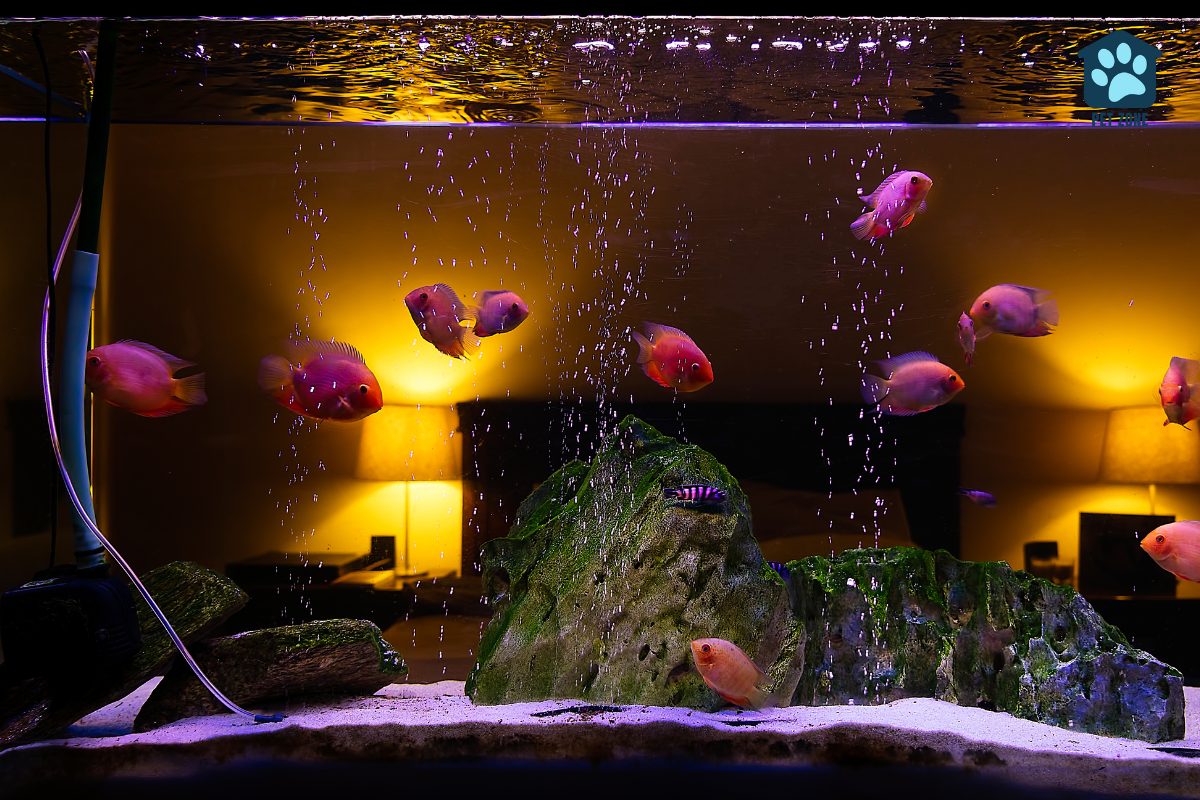
Distinction Between GH and KH
General Hardness (GH) and Carbonate Hardness (KH) are two important parameters that affect the overall water quality in your aquarium. GH refers to the concentration of calcium and magnesium ions in the water, while KH measures the amount of carbonates and bicarbonates present.
Understanding these distinctions is crucial for maintaining a healthy aquatic environment.
Carbonate Hardness (KH)
Carbonate hardness is all about the buffering capacity of your aquarium water. It keeps your pH levels stable, so your fish stay happy and healthy. Think of KH as a security system that stops sudden changes in the water’s acidity or alkalinity.
Fish get stressed when their environment flips upside down, and KH helps prevent that.
If KH drops too low, you could face a pH crash – this spells trouble for fish and plants alike. On the flip side, if carbonate hardness climbs too high, it can mess with life in the tank and make keeping an ideal balance harder than it needs to be.
Your goal is to hit just the right level of KH—the sweet spot where everything thrives without wild shifts in pH levels.
General Hardness (GH)
General Hardness, or GH, is all about the minerals in your aquarium water. It tells you how much calcium and magnesium are dissolved there. Fish need these minerals to grow and stay healthy.
The right amount of GH makes sure their bones get strong and they can have babies.
For a freshwater aquarium, it’s best to keep the GH level between 4-8 degrees dGH. That’s the same as 70-140 parts per million (ppm). If you match this ideal range, your fish will be happier and healthier in their home.
Significance of KH in Your Aquarium
Maintaining the right KH is crucial as it impacts your aquarium’s pH stability. Low KH can lead to sudden drops in pH, stressing or harming fish, while high levels help stabilize pH.
By measuring total alkalinity through KH, you ensure a healthy environment for your aquatic pets. It prevents pH fluctuations and maintains stable water quality – an essential factor in their well-being.
Water’s buffering capacity, indicated by KH, helps neutralize acids from fish waste. Maintaining this balance ensures a safe and stable habitat for your pet fish or other aquatic life forms in your tank.
The Process of Testing KH in Your Aquarium
Testing the KH level is crucial for ensuring a stable environment for your aquarium inhabitants. Here’s a step-by-step guide to testing the KH in your aquarium:
- Obtain a reliable aquarium water test kit, specifically designed to measure KH levels. This kit should include all necessary reagents and detailed instructions.
- Fill a clean test tube with water from your aquarium, ensuring it’s at room temperature.
- Add the provided reagent drop by drop while gently swirling the test tube after each drop until you observe a distinct color change.
- Note the number of drops required to produce the color change and refer to the instructions in the test kit to determine the KH level in degrees of carbonate hardness (dKH) or parts per million (ppm).
- Record this value in your aquarium maintenance log or journal, along with the date of testing, to monitor any fluctuations.
- Repeat this process regularly, aiming for consistent and suitable KH levels based on your specific aquatic ecosystem.
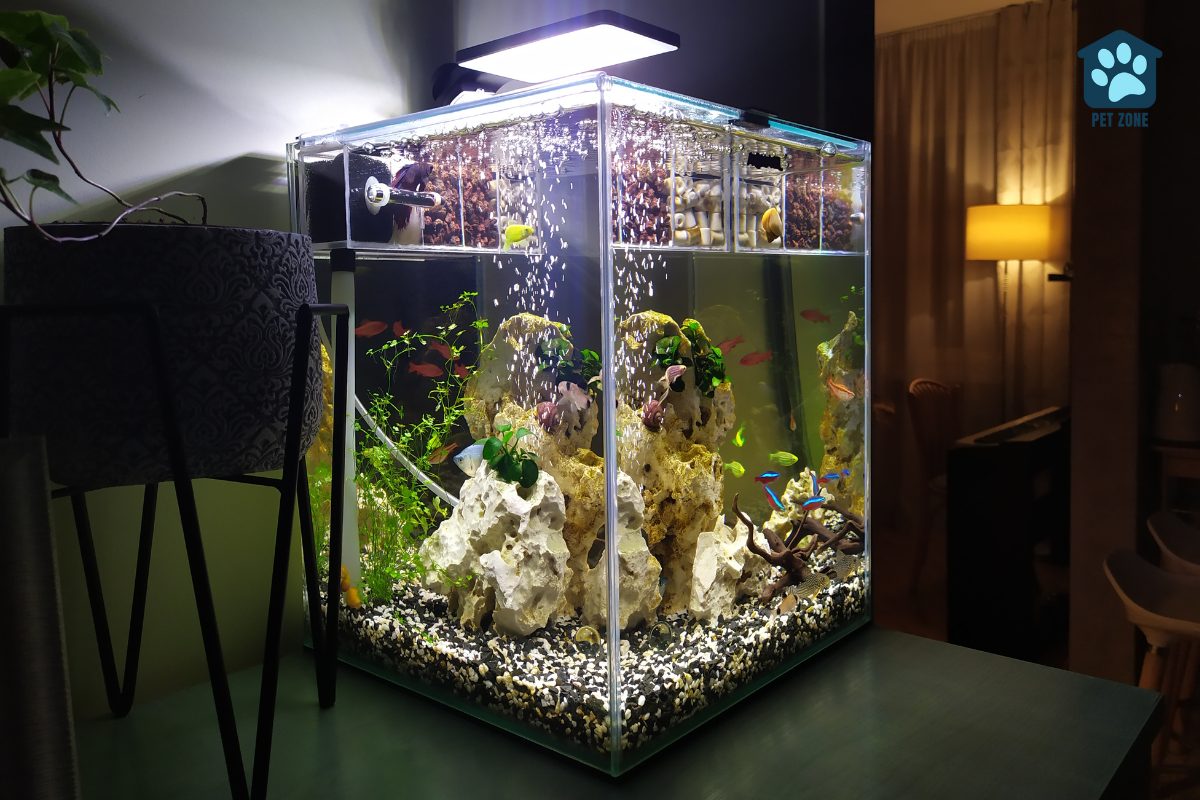
Ideal KH Levels for Different Aquariums
Freshwater aquariums typically require an ideal KH level of 3-8 degrees, while saltwater aquariums may need a slightly higher KH range of 7-11 degrees. It’s important to maintain these levels to ensure the health and well-being of your aquarium inhabitants.
Freshwater Aquariums
Freshwater aquariums require attention to the KH levels as they influence the health and well-being of your aquatic life. Low KH can lead to pH drops, causing stress or even death among most freshwater fish.
It’s essential to maintain suitable KH levels for optimal plant growth and a healthy environment for your fish, enhancing their overall quality of life.
Sudden drops in pH due to low KH levels can harm the delicate balance in your aquarium, impacting livestock health and potentially leading to adverse effects on fish species and plants.
Saltwater Aquariums
Saltwater aquariums require a balanced KH level of 8-10 dKH to maintain stable alkalinity, crucial for the health of corals and other inhabitants. Managing reef tank KH is especially important as it directly impacts the well-being of marine life within.
To increase KH levels in saltwater aquariums, consider using sodium carbonate (soda ash) to ensure the optimal condition for your aquatic environment.
Methods for Lowering KH in Your Aquarium
To lower KH in your aquarium, you can consider using acid buffers, incorporating RO/DI water, or utilizing distilled water. Another option is to introduce Indian almond leaf or peat moss into your aquarium.
Each method has its benefits and considerations, so it’s important to weigh the options carefully based on your specific aquarium setup and the needs of your fish.
Use of Acid Buffers
Acid buffers can decrease KH and lower pH in your aquarium by converting it to carbon dioxide (CO2). This reduces the water’s buffering capacity, making it easier to control pH levels.
However, their usage requires caution due to potential risks and the need for proper dosing and monitoring. Products like lime and muriatic acid are used to lower KH effectively but should be handled with care.
Alkaline buffer combined with acid buffer is preferred for stabilizing reverse osmosis water in lower pH/soft water aquariums.
Incorporating RO/DI Water
Incorporating RO/DI water into your aquarium can effectively reduce the KH, GH, and pH levels. By mixing RO/DI water with tap water, you can ensure that there is still some essential KH and GH present in the aquarium.
This helps to create a balanced environment for your fish while making it easier to adjust and maintain the ideal levels. Utilizing reverse osmosis water is one of the most efficient methods for lowering KH in your aquarium, as it removes a majority of carbonates and bicarbonates, ensuring better control over the parameters.
By swapping out some of the existing water with RO or distilled water, pet owners can effectively lower GH, KH, and pH levels within their aquariums. Keeping an appropriate balance ensures a healthy environment for aquatic life while allowing you to more easily manage and stabilize these critical parameters without risking uncontrolled shifts or fluctuations.
Utilization of Distilled Water
To lower the KH levels in your aquarium, consider using distilled water in combination with tap water. Mixing these two types of water in a 50/50 ratio can help reduce the carbonate hardness (KH) while still maintaining some general hardness (GH) necessary for the health of fish and plants.
It’s important to ensure that there is still some GH and KH present to support aquatic life, and this method provides a balanced approach to achieving the desired water parameters for your aquarium without compromising essential mineral levels.
Remember, combining distilled water with tap water helps maintain the necessary GH and KH levels for a healthy aquatic environment.
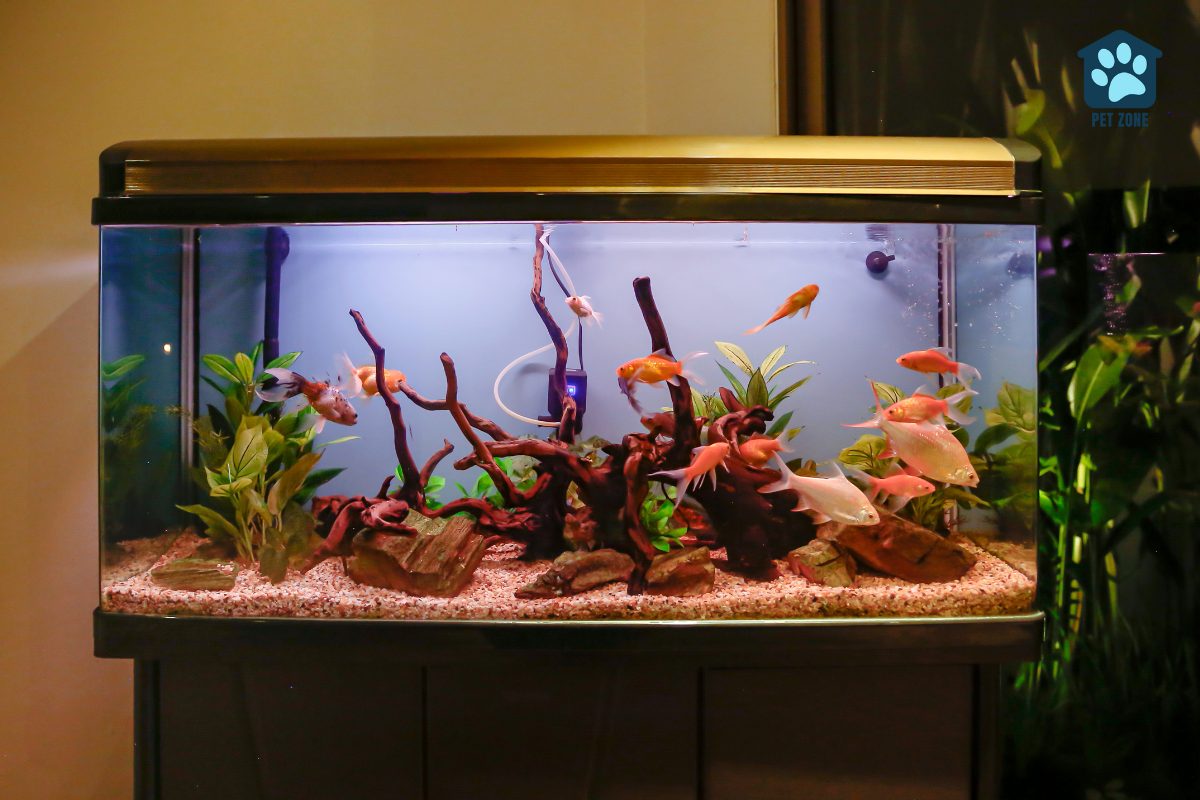
The Expensive Solution
Some pet owners turn to adding distilled water or Indian almond leaves to their aquariums as a costly solution to lower KH levels. These options can be pricier compared to other methods and might not be the most cost-effective choice for long-term maintenance of your aquarium.
While these solutions may work, they can add up in terms of expenses over time and may not provide the best value for reducing carbonate hardness in your tank. Instead, considering more affordable alternatives such as using acid buffers or incorporating RO/DI water could be a wiser investment in managing your aquarium’s KH levels while also being budget-friendly.
The use of distilled water should be considered with caution due to its potential impact on pH levels and the overall balance within your aquarium. Similarly, relying solely on Indian almond leaves might not deliver consistent results when it comes to stabilizing KH levels effectively.
Application of Indian Almond Leaf
Indian almond leaves are a natural way to lower pH levels in aquariums. These dried catappa leaves also release tannic acid, which acts as an acidity buffer in your tank. Additionally, they can help add tannins and aid in healing mild fish ailments.
Using Indian almond leaves is a practical solution for pet owners looking to lower the pH levels in their aquariums naturally. By harnessing the properties of these leaves, you can create a more conducive environment for your aquatic pets, all while embracing a holistic approach to aquarium maintenance.
Introduction of Peat Moss
Peat moss is a natural material that effectively lowers carbonate hardness (KH) in aquarium water. It releases acidic compounds known as tannins, which work to reduce KH levels and subsequently lower the general hardness (GH) of the water.
This can be particularly beneficial for pet owners looking to stabilize pH levels in their aquariums, as peat moss serves as a natural method for achieving this goal. By incorporating peat moss into your aquarium maintenance routine, you can create an environment that is conducive to the health and well-being of your aquatic pets.
Peat moss acts as a practical solution for those seeking to control KH and GH levels without resorting to chemical additives or complex procedures. Instead, it provides a straightforward and environmentally friendly approach to managing the key parameters of aquarium water quality.
Consequences of Zero KH Levels
Zero KH levels can lead to pH instability, impacting the well-being of aquatic life. Without sufficient KH, the water’s ability to maintain a stable pH decreases, potentially causing harmful fluctuations that stress and endanger fish.
Additionally, zero KH levels can disrupt the nitrogen cycle in the aquarium, leading to ammonia poisoning as the cycle stalls due to inadequate buffering capacity.
As KH serves as a crucial buffer against abrupt changes in acidity, its absence could result in challenging conditions for fish and other aquatic organisms. Furthermore, maintaining balanced pH levels is integral for overall tank health and stability – an aspect directly affected by adequate carbonate hardness.
Why You Should Maintain Some KH Levels
KH levels play a crucial role in stabilizing the pH of your aquarium water, keeping it within the optimal range for your aquatic life. This is vital for preventing abrupt changes that can stress and harm your fish, shrimp, or other species.
By maintaining some level of KH, you are safeguarding the well-being of your aquatic pets and promoting a stable environment for their growth and overall health. Additionally, proper KH levels support the buffering capacity of the water against acids, ensuring a constant pH level essential for the thriving ecosystem within your aquarium.
Maintaining suitable KH levels is particularly important if you have sensitive aquatic plants as they rely on stable pH conditions to flourish in their underwater habitat. Consistently monitoring and managing KH levels will contribute to creating an environment where both plant life and aquatic animals can thrive harmoniously.
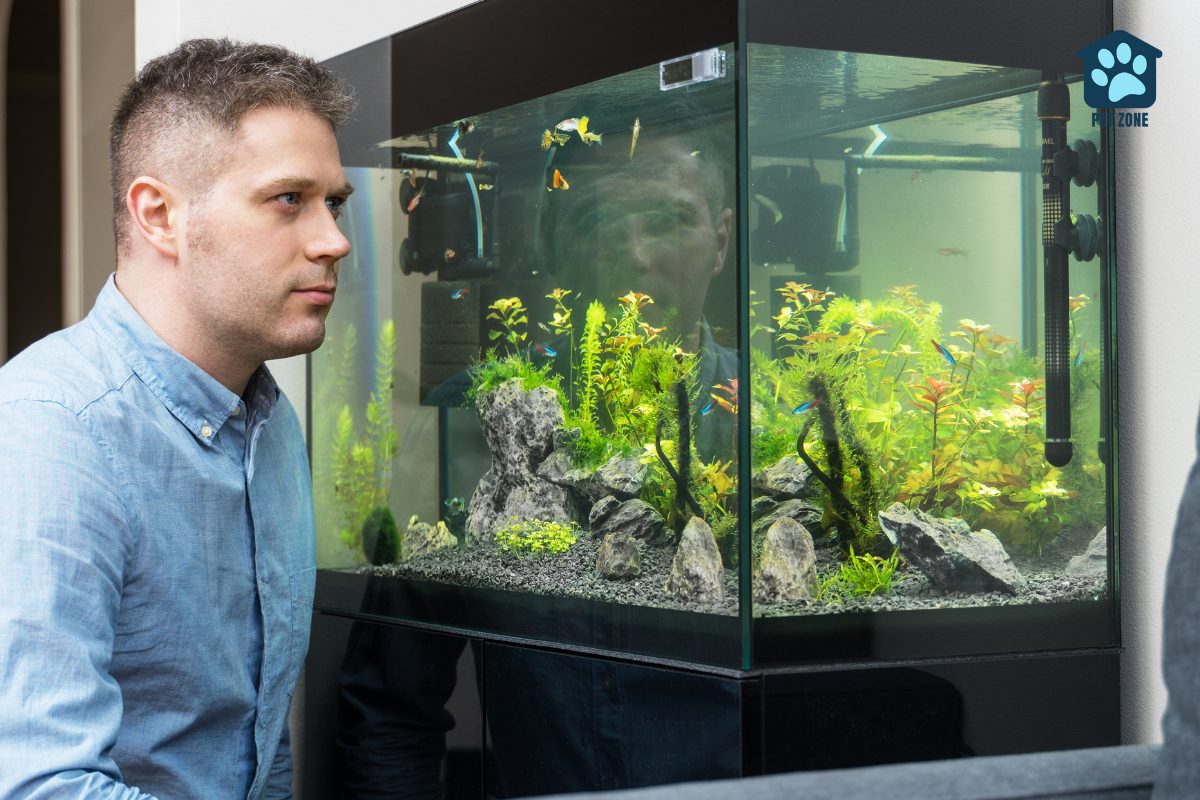
Methods for Increasing KH
To raise and stabilize the KH levels in your aquarium, there are several methods you can consider. From regular water changes to the application of alkalinity buffers and the use of crushed coral or aragonite, there are multiple strategies at your disposal.
Each method offers its unique benefits and considerations for maintaining optimal water conditions for your aquatic pets.
Regular Water Changes
Performing regular water changes is crucial to replenish the KH levels in your freshwater tank, especially if your local water supply has a high KH. The amount of water change needed will depend on the current levels and the desired increase or decrease.
Total alkalinity in the aquarium, often measured in degrees (dKH), impacts overall water quality, making it essential to monitor. Keep an eye on these levels and plan your water changes accordingly for a healthy aquarium environment.
Conducting frequent small adjustments through regular partial water changes can be more effective than infrequent large ones, ensuring stable conditions for your aquatic pets. So whether you’re dealing with high or low KH levels, consistent monitoring and timely action are key to maintaining a balanced aquarium ecosystem.
Application of Alkalinity Buffers
Alkalinity buffers like soda ash, baking soda, and phosphate serve as essential tools for pet owners in the quest to maintain balanced carbonate hardness (KH) levels in their aquariums.
By utilizing these buffers, you can effectively raise KH levels, ensuring a stable and optimal environment for your aquatic companions. Carbonates and bicarbonates present in these buffers act as reliable agents that stabilize pH levels, preventing drastic fluctuations that could be harmful to the inhabitants of your aquarium.
Notably, soda ash—also known as sodium carbonate—is particularly efficient in boosting KH levels within saltwater aquariums, promoting a healthy and thriving aquatic ecosystem for your beloved pets.
Use of Crushed Coral
Crushed coral, high in calcium carbonate, helps boost KH levels. It gradually raises both KH and pH without startling the aquarium inhabitants. This process occurs as crushed coral slowly dissolves over time or during water changes.
The combination of crushed coral with aragonite is even more effective at increasing the KH level, making it a valuable addition to stabilizing water conditions in your aquarium while providing essential minerals.
Incorporation of Aragonite
Aragonite, the crystal form of calcium carbonate, is beneficial for your aquarium. It can release calcium and carbonate to help stabilize water chemistry. This mineral is crucial for reef aquariums as corals and coralline algae use it to build their skeletons.
Aragonite acts as a natural buffer, helping maintain stable pH levels in the tank by counteracting acids. Additionally, it aids in sequestering iodate and plays a key role in regulating the hardness of water in your aquarium.
By integrating aragonite into your aquarium environment, you provide essential elements for aquatic life while contributing to the overall health and balance of the ecosystem.
Addition of Soda Ash
Soda ash, or sodium carbonate (Na2CO3), is a common method to boost KH in your aquarium water. This is especially essential for saltwater tanks. Not only does soda ash effectively raise the carbonate hardness (KH) of the water, but it can also significantly elevate the pH level.
Unlike baking soda, which primarily adjusts pH and KH levels, soda ash serves the specific purpose of increasing pH in aquariums.
One-time use: Sodium Carbonate – Raise KH – Elevates PH – Saltwater Tanks – Adjusts Specifically For PH
Impact of Increasing KH on pH Levels
High KH levels can lead to a rise in pH, affecting the overall water balance. The greater the KH, the more resistance there is to pH changes. It’s important to monitor and manage KH levels as they directly impact the stability of your aquarium’s pH.
Maintaining an appropriate KH helps prevent sudden drops or rises in pH that could harm your aquatic life. Aquatic plants are particularly sensitive to fluctuations in KH values, which further emphasizes the need for careful management.
Additionally, harder water holds its pH value better than soft water due to higher mineral content, making it crucial for pet owners to understand how increasing KH levels can impact their aquarium’s overall ecosystem.
By considering these factors and implementing suitable strategies based on individual aquarium needs, you can ensure a balanced environment conducive to healthy aquatic life.
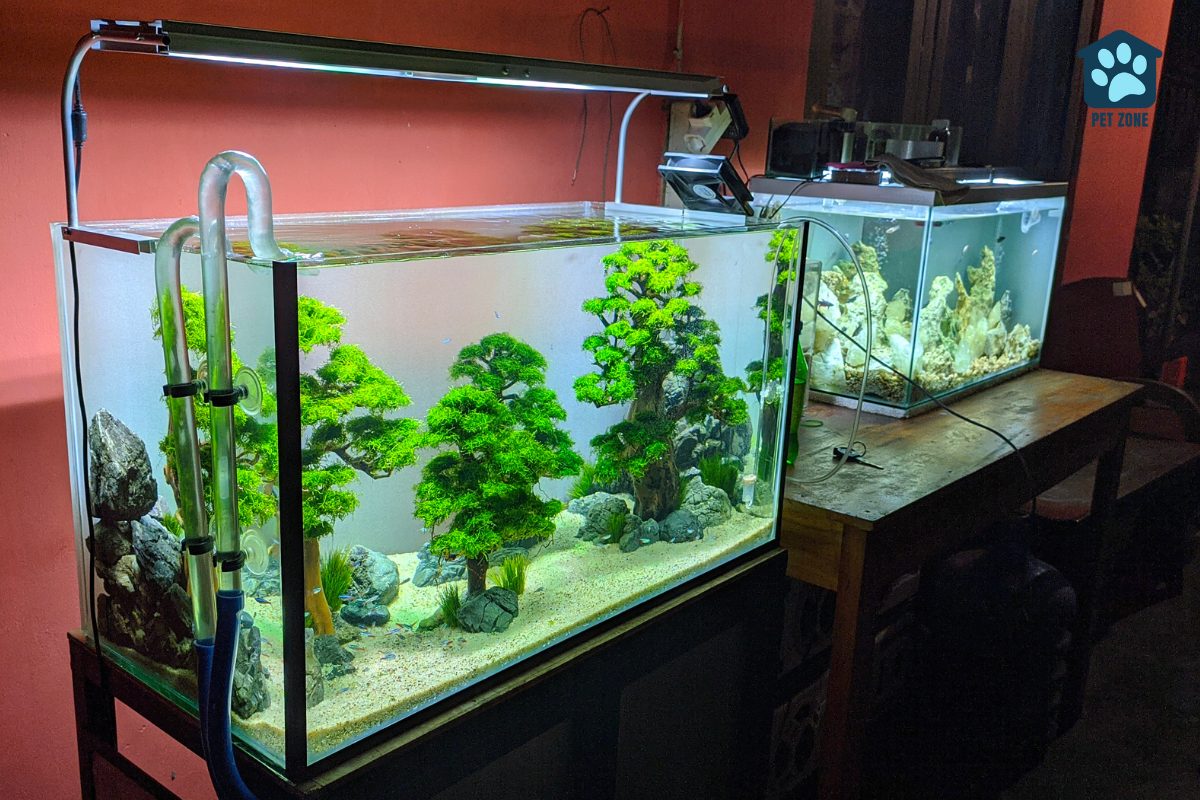
Conclusion
To maintain a balanced and healthy aquatic environment, it’s crucial to understand how to lower KH in your aquarium. By utilizing methods such as acid buffers, Indian Almond leaves, and peat moss, you can effectively reduce the carbonate hardness in your tank.
Additionally, incorporating distilled or RO water and adjusting water change routines are practical steps toward achieving optimal KH levels. With these strategies at your disposal, you can create an ideal habitat for your fish while ensuring their well-being and vitality.
Frequently Asked Questions
KH stands for carbonate hardness, which measures the carbonates and bicarbonates in your tank’s water. It’s vital because it helps stabilize pH levels.
You may want to lower the KH if it is very high, as this could lead to a drop in pH that might harm your fish – especially species like betta fish and shrimp that prefer more acidic water.
To monitor the KH in your aquarium, use a test kit made specifically for measuring carbonate hardness. Follow the instructions closely to understand how hard your water is.
Yes! Adding pure or distilled water slowly over time can lower the overall hardness of your tank’s water without shocking your fish with a sudden change.
Plants absorb carbon dioxide from the water, which can impact carbonate hardness – so they might just help you naturally manage and stabilize those crucial pH levels!
Carefully using products designed to raise or lower hardness can help; but remember, when altering chemistry—like attempting to lower KH without affecting other elements—go slow, always aiming for gradual changes.
As an Amazon Associate I earn from qualifying purchases.
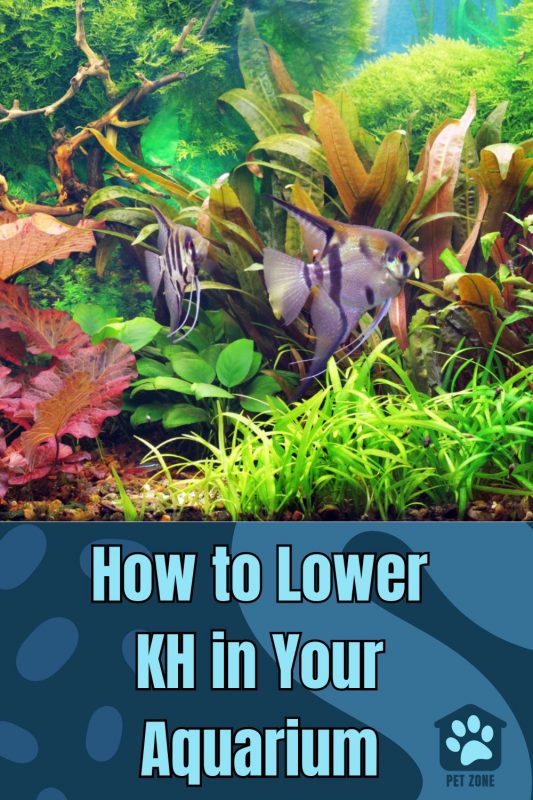


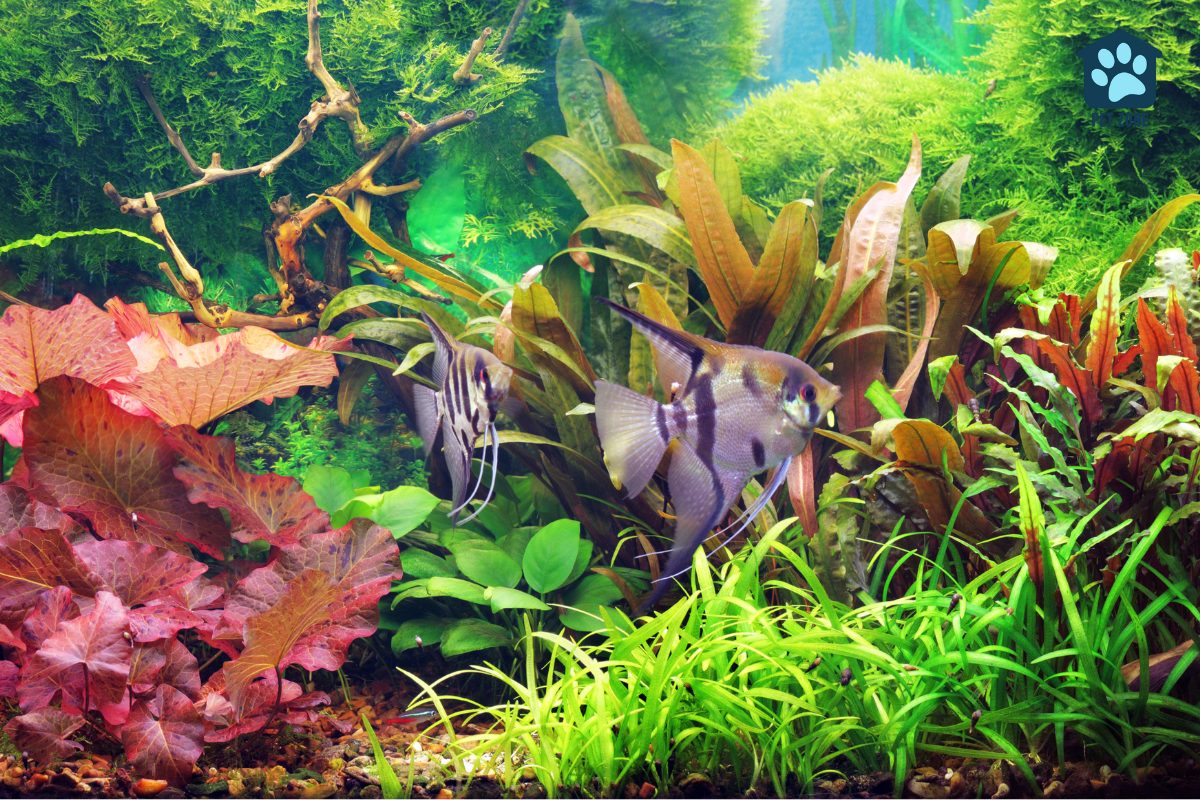
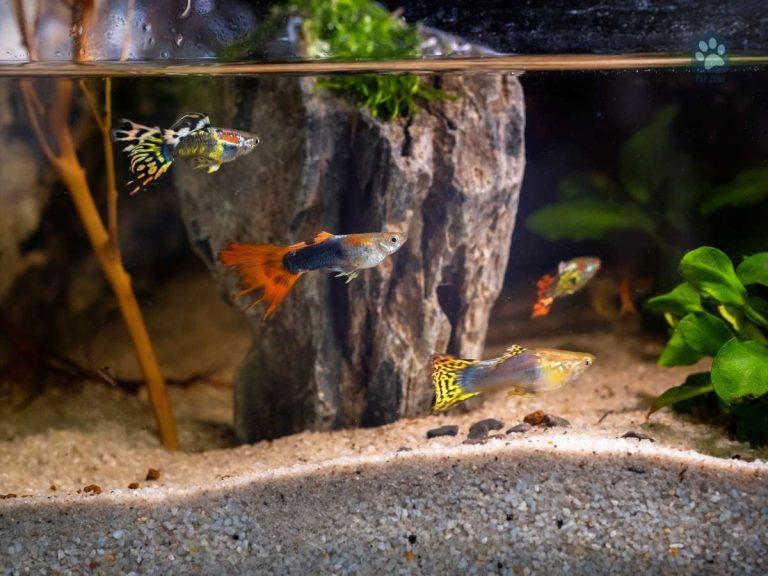
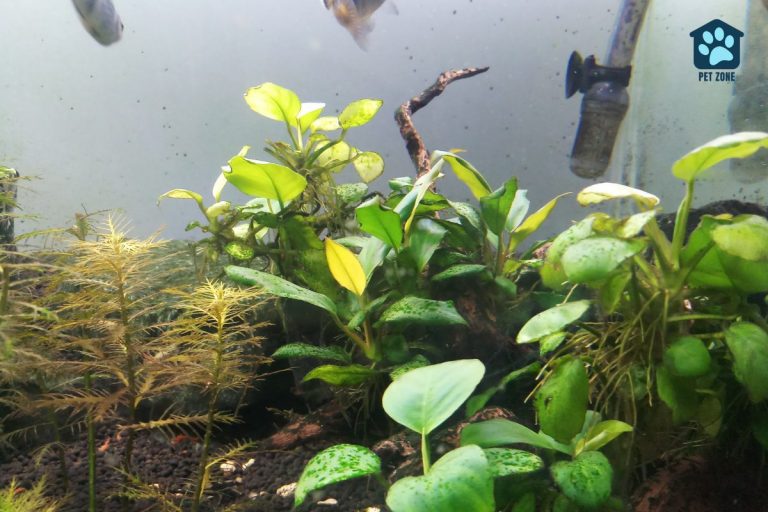
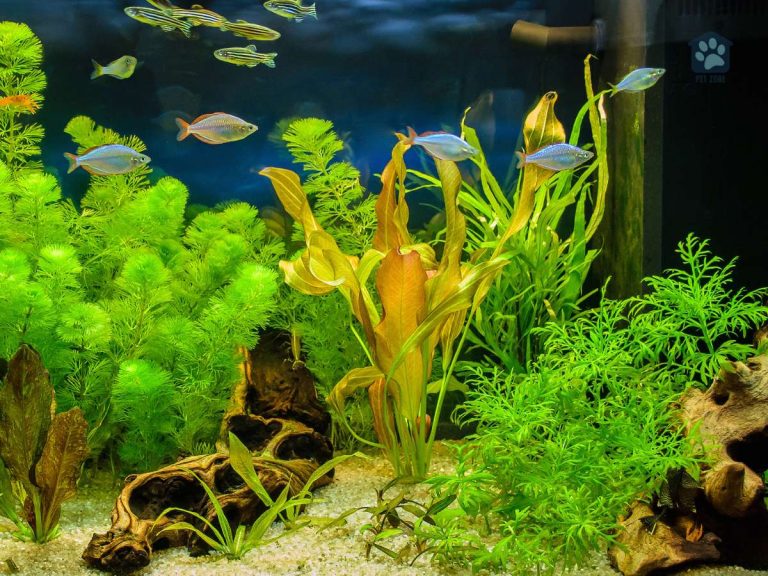
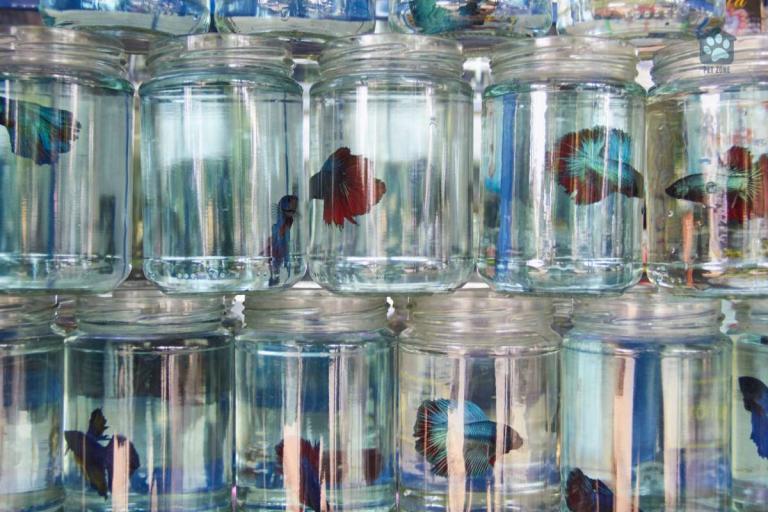
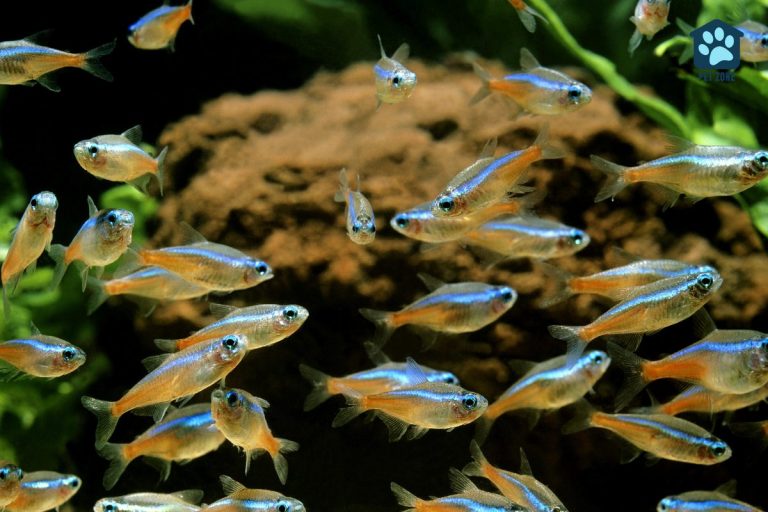
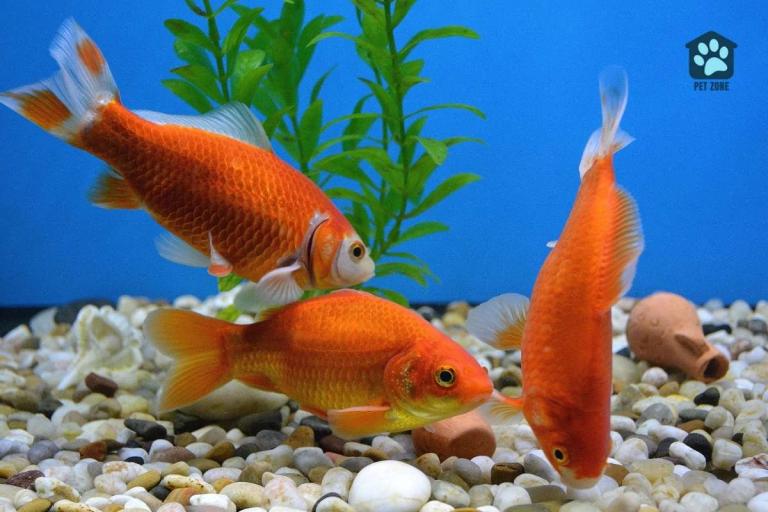
Thank you for these tips! My family had a fish tank in our living room when I was little and I have fond memories of sitting in front of it and watching the fish do their thing. I would love to have one again! And, are these your personal photos? The aquarium in the photos is so beautiful!